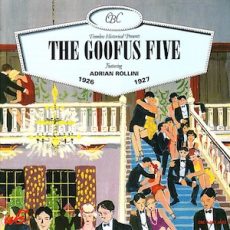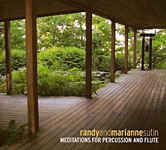
ROY AYERS TRIBUTE
Atlanta is celebrating the legendary Roy Ayers. A pioneer of jazz-funk, vibraphonist, composer, and producer whose sound became the heartbeat of Black culture from the 1970s through today. Often dubbed the “Godfather of Neo-Soul,” Ayers’ genre-bending artistry shaped the sonic foundation for countless artists, from Erykah Badu and The Roots to A Tribe Called Quest and Common.
Long before the dancefloors of Harlem to the airwaves of London and the sample-heavy beats of 90s hip hop, Roy Ayers’ Ayers started recording as a bebop sideman in 1962. In 1963, he released his debut studio album West Coast Vibes featuring a collaboration with the saxophonist Curtis Amy. He rose to prominence when he dropped out of Los Angeles City College and joined jazz flautist Herbie Mann in 1966. His music has transcended generations, inspiring a movement rooted in rhythm, liberation, and Black excellence.
Hosted by WCLK’s Morris Baxter, the evening will be opened by Heda Rose, followed by Mark Adams and a host of Atlanta musicians and vocalists.
Cover: $30.00 ~ $55.00More Posts: adventure,bandleader,club,genius,instrumental,jazz,music,preserving,travel,vibraphone,vocal

Daily Dose Of Jazz…
Jeno Beamter was born on August 7, 1912 in Budapest, Hungary. Graduating from high school in 1930 he was already trained as a drummer at the age of seven, although he was taught to play the violin. He completed his musical studies privately. From 1930 , he was taught to play the drums by Vilmos Roubal, a member of the Opera House. He soon began to play the vibraphone.
From 1933 he played in various bands, Bubi Vibraphone Ensemble, Solymossy–Beamter Duo, Ernő Vécsey Ensemble, Martiny Band, and Szabó–Beamter Duo. He made his first recordings with the Smiling Boys band.
The various jazz formations of Jenő Horváth’s Radiola Band, the Herrer band, the Durium band, Tabányi and its soloists, János Gaál Gyulai’s small band, and the Deák Big Band were the prominent bands in which he played. He made guest appearances in Austria, Switzerland, the GDR, England, and Yugoslavia.
In the 1970s, he performed with Barbra Streisand and Frank Sinatra in a joint show at the Kennedy Center. Jeno performed live with Tabányi on Hungarian Radio for fifteen years, almost every Sunday.
Drummer, vibraphonist, composer and educator Jeno Beamter, who performed in the traditional, modern and was one of the legendary figures of Hungarian swing music, died on January 11, 1984 in the city of his birth.
More Posts: composer,drums,educator,history,instrumental,jazz,music,vibraphone

EARL PHILIPS BIG BAND
Tribute to Terry Gibbs & His Dream Band | Steve Weiss Mallet Festival)
Earl Phillips is active as composer/arranger, educator, and bass trombonist in the greater Philadelphia area. As a composer/arranger, Earl directs and writes for the Earl Phillips Big Band and has led his own 17-piece big band since 2007.
As an educator, Earl is the Professor of Jazz Trombone and a member of the Composition / Arranging faculty at Rowan University. Earl is also the Director of thel Jazz Ensemble, and teaches Music Theory and Music Technology at Cherokee High School. Earl has also directed the Philadelphia Grammy Band (2005-2007), the All South Jersey Jazz Ensemble (2008 &2012), the All Central Jersey Jazz Ensemble (2014) and he has been a clinician/manager with the New Jersey All State Jazz Ensemble (2009-2014).
In 2020, through the COVID pandemic, Earl ran 2 All-State Jazz Ensembles to keep region jazz running and, for those efforts, was recognized as the 2020 New Jersey Association of Jazz Education “Teacher of the Year” award.
More Posts: adventure,bandleader,club,genius,jazz,music,preserving,travel,vibraphone

Daily Dose Of Jazz…
Adrian Francis Rollini was born June 28, 1903 in New York City, New York of French and Swiss extraction. Growing up in Larchmont, New York, he showed musical ability early on and began to take piano lessons at the age of two. Considered a child prodigy, he played a fifteen-minute recital at the Waldorf Astoria Hotel at the age of four. By age 14 he was leading his group composed of neighborhood boys, in which he doubled on piano and xylophone.
Leaving high school in his third year he cut piano rolls for the Aeolian company on their Mel-O-Dee label and the Republic brand in Philadelphia, Pennsyolvania. At 16 he joined Arthur Hand’s California Ramblers and being equally skilled at piano, drums, xylophone, and bass saxophone, gained him Hand’s respect. Hand transferred the band to Rollini when he retired from the music field.
During the 1920s not only was he a member of the California Ramblers with Red Nichols, Jimmy and Tommy Dorsey, he also held membership in The Little Ramblers, The Goofus Five, and The Golden Gate Orchestra. During this time, he managed to lay down hundreds of sessions with Annette Hanshaw, Cliff Edwards, Joe Venuti, Miff Mole, Red Nichols, Bix Beiderbecke, Roger Wolfe Kahn, and Frank Trumbauer.
The 1930s saw him forming the Adrian Rollini Orchestra which recorded on Perfect, Vocalion, Melotone, Banner, and Romeo labels, where he played both bass saxophone and vibraphone. During the early swing era, starting in 1935, he managed Adrian’s Tap Room, owned the Whitby Grill, and opened White Way Musical Products, a store for the sale and repair of musical instruments.
Gradually shifting from the bass saxophone to the vibraphone after popularity of the hot jazz era of the 1920s waned. He went on to play hotels, arranging and writing songs behind the scenes. After an exhaustive career, he made his last recording with his trio in the early 1950s. He relocated to Florida, opened the Eden Roc Hotel in 1955, ran the Driftwood Inn at Tavernier Key and his Driftwood offered deep-sea fishing charters.
Bass saxophonist, pianist, and vibraphonist Adrian Rollini, died under unsolved circumstances on May 15, 1956 at the age of 52 in Homestead, Florida.
More Posts: bandleader,history,instrumental,jazz,music,piano,saxophone,vibraphone

Daily Dose Of Jazz…
Randy Sutin was born on May 14, 1958 in Great Falls, Montana where he studied piano starting at age four and guitar when he turned eight. By the time he was ten he began study of the drums. He began playing mostly rock and some country professionally with local groups at age thirteen. At 20, he began to study mallet percussion, in particular the vibraphone, which became the main staple of his professional life as a musician.
In 1985, Randy relocated to Trenton, New Jersey, then to the Philadelphia, Pennsylvania area four years later. He was a regular member of the Bill Hollis Quartet and soon began working regularly and recording with the Barry Sames Jazz Ensemble. A regular member of the late pianist Eddie Green’s group, he was featured on Eddie’s last recording, Shades of Green. He has also played and recorded with Walter Bell and the Latin Jazz Unit.
Over the last fifteen years, Sutin has continued playing as a regular member of the Barry Sames Jazz Ensemble, which does jazz arrangements of Christian music. He is featured as a soloist on both of Barry Sames’ recordings, Awaiting the Spirit and Celebration. This association with playing jazz for spiritual purposes and a desire to do a project with his wife, Marianne, who is an experienced yogi, led to his latest musical endeavor.
In 2007 they released Meditations for Percussion and Flute, a suite of compositions based on yoga practice blending a mixture of styles, but always falling back to jazz as its core. Together they created their record label, Balanced American Music. Recent work has focused on The Birdhouse Project, a trio with Jim Miller and Tyrone Brown, performing the compositions of Charlie Parker.
His most current project is with The Tyrone Brown String Ensemble. Randy is featured on both of their 2008 releases, The Magic Within and Moon of the Falling Leaves.
Vibraphonist Randy Sutin, who also plays marimba, continues to perform and record.
More Posts: bandleader,history,instrumental,jazz,music,vibraphone




